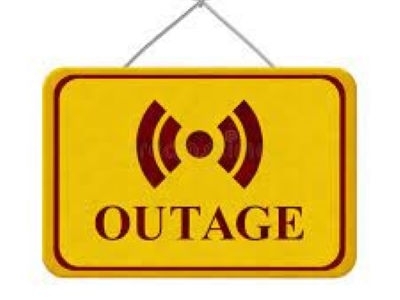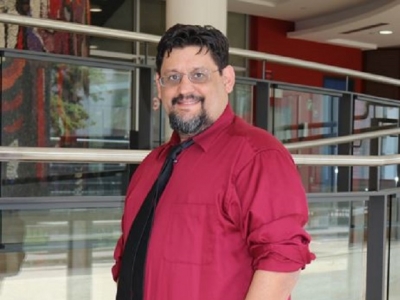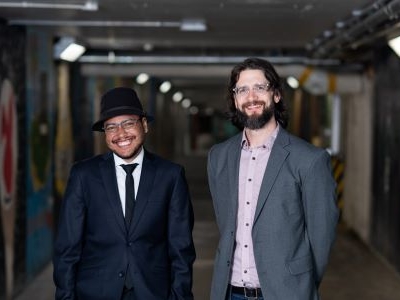–Written by Ty Burke
Each time the grave threat of a new disease lands upon our shores, media tells the story to the public in more or less the same way: the outbreak narrative.
“They follow the spread of cases and search for patient zero,” says Gabriela Capurro, a PhD communication candidate in Carleton’s School of Journalism and Communication.

“They tell us how experts and doctors are trying to contain it, and finally, how the outbreak ends.”
It makes a convenient, compelling story hook. Each disease has a geographic origin, a place and culture upon which blame can be (and is) assigned. The heroes of western medicine ward off the threat to our collective well-being. Capurro began researching how the narrative is constructed during her Master’s.
“One of my chapters dealt with how media coverage constructed H1N1 as the ‘Mexican Flu,’” she says. “There were demeaning depictions of Mexico and Mexicans, and that’s part of the outbreak narrative. When we talk about illness and risk, there is always a construction of self and otherness. It’s a way of defining that we’re safe, free, and healthy. And that ‘others’ are not; that ‘they’ bring their diseases. In the search for patient zero there is always the question of ‘Who caused this?’ and ‘Where did this begin?’ We see it time and again, with H1N1, Zika, SARS. ‘They’ are poor, ‘they’ don’t have a good health system, ‘they’ have improper hygiene.”
So what happens when an outbreak comes from within our borders? From within the very system of medicine we’ve built to protect us?
Antimicrobial resistance is undermining the effectiveness of western medical treatments, and in doing so, it’s flipping the tenets of the outbreak narrative on their head. Bacteria, viruses, parasites and fungi can develop resistance to treatments that have been reliable for decades, even longer in some cases. It can happen anywhere, and it does.
“With antimicrobial resistance there is no patient zero,” Capurro says. “There is no one place it emerged. It’s a global phenomenon, and it spreads silently. Risk isn’t specific to one area – where there’s an outbreak in Ottawa. It’s no longer something that’s only acquired in hospitals. Now, it happens in the community to young, healthy people. The nature of the threat has changed. It doesn’t spread fast, but now it can happen in a place where there was no case before.”
Individual cases can seem isolated when they don’t happen in clusters, but the threat’s slow spread belies its severity. The U.S. Centers for Disease Control and Prevention estimates that at least 2 million people are infected with drug resistant bacteria each year, and that 23,000 of them die. In contrast, the global SARS epidemic that dominated the news in 2003 killed 97% fewer people.
In September 2016, the United Nations issued a declaration recognizing that antimicrobial resistance posed a grave challenge to the achievements made by 20th century medicine, acknowledging that it threatens the sustainability and effectiveness of public health. Yet antimicrobial resistance has received precious little media coverage. The coverage it has received has been very different from other public health crises. It’s been almost antiseptic, lacking in the compelling human narratives that have drawn public attention to other outbreaks
“We’re at a stage where it’s still a novel enough risk, in terms of public awareness, that the communications process is mostly the transmission of expert knowledge,” Capurro says. “Media are consulting experts and scientists, and reproducing expert opinion. They’re trying to understand how this will affect policy making, because policy is just starting to be created. For different health risks, lay knowledge and public experience with the risk eventually become part of the story, but we’re not seeing that yet.”
For Capurro, it makes fertile ground for critique. The way discourses are shaped affects the way the public understands a health risk with serious ramifications.
“Given what we know about antimicrobial resistance, I don’t think it’s bad reporting to focus only on experts, but journalists make choices: Do you call it a superbug? How do you frame it? Who do you talk to? If it’s experts, do you default to Health Canada? Even with limited choices, journalists choose how to define antimicrobial resistance. What I’m most interested in is how different levels of risk get defined. How scientists talk about it, and how the discourses they create percolate – or don’t – into the discourses of the WHO, Health Canada, and media coverage. All of these different narratives end up shaping how the public understands the risk.”
For more information about the PhD in Communication, please click here.
Thursday, December 14, 2017 in Grad Student Research, News
Share: Twitter, Facebook





